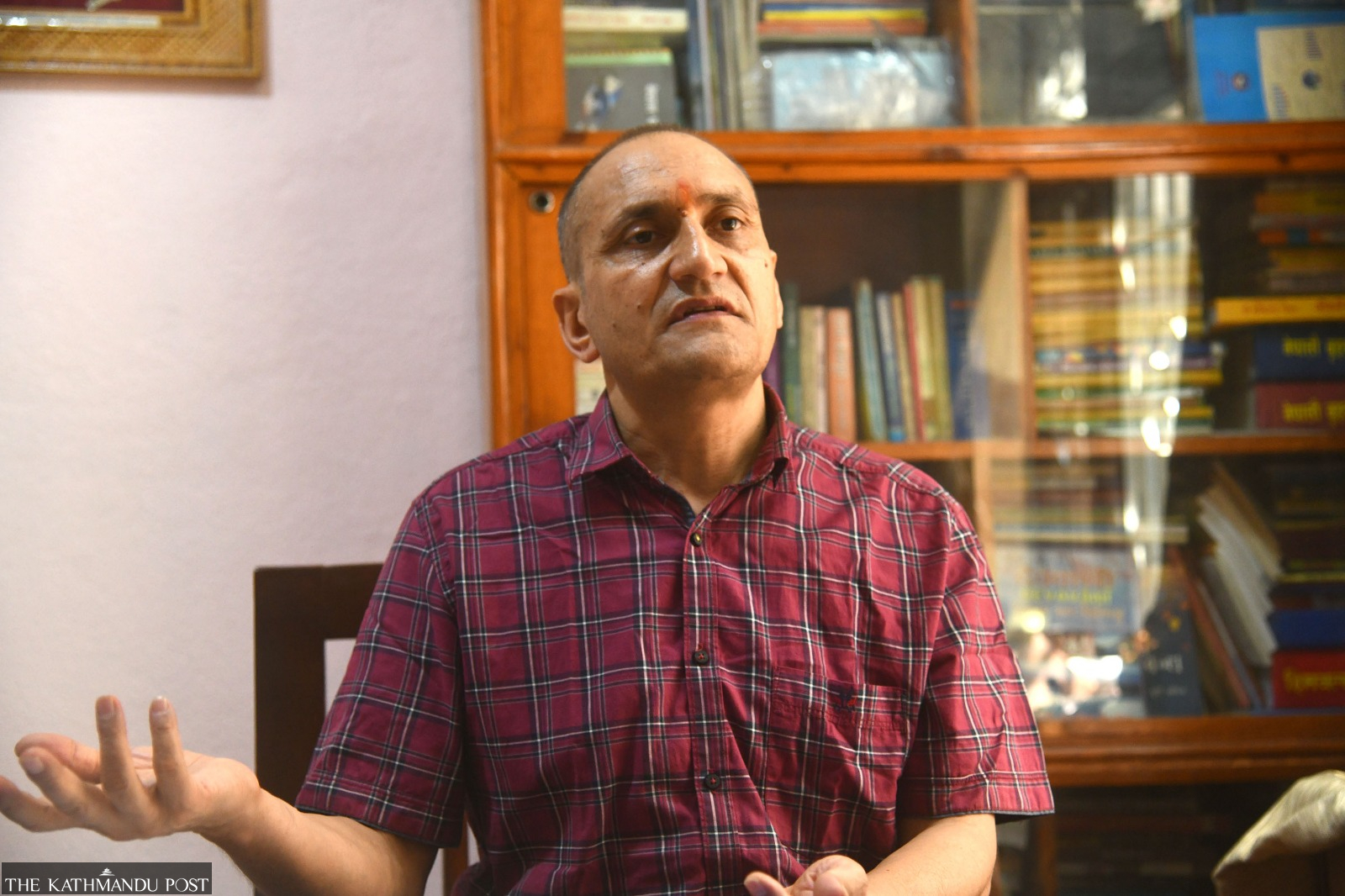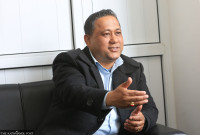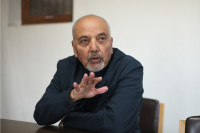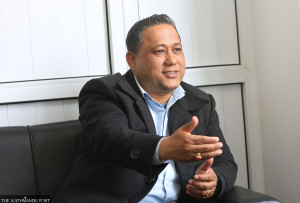Interviews
National ID number is sufficient. You don’t need a hard copy
Citizenship and National ID are fundamentally different. Unique digital identity numbers can help drastically decrease frauds.
Thira Lal Bhusal
The government has decided to make the National ID Card mandatory in order to receive services from government and public institutions. In the first phase, the June 6 Cabinet meeting made the National ID card number mandatory in 28 districts. People including federal lawmakers criticised the decision saying that it was enforced without first distributing the cards. In this context, Post’s Thira Lal Bhusal sat down with Yubaraj Katel, director general of the Department of National ID and Civil Registration.
Let’s begin with a basic question. Why do we need a National ID card while we already have citizenship certificate, driving license, passport and voting card?
There is a fundamental difference between a citizenship card and National ID. Citizenship establishes whether you are a citizen of the country and it helps you identify yourself with some basic details. In Nepal, it was also widely used as a service card. Wherever you go, you have to show the citizenship card—to open a bank account or acquire a SIM card for a phone. If we study international practices, there are mainly two cards—one is an identity card and the other is a service card. In 2018, the Nepal government came up with the idea of distributing national identity cards with a unique digital number for each eligible citizen. The number can track not only the individual but also the person’s activities and movements.
This project has various components. First is data collection. It has two categories—demographic data, such as the names of father, mother and other family members. Second is biometric data—fingerprints, eye retina and digital signature. The biometric data is crucial to create a unique identity of each individual and avoid duplication in the integrated national database. The National ID has these two types of data. The other tasks are enrollment of the data, printing and distribution of the cards and then providing services based on that.
At present, people carry multiple cards in their pockets. The objective of this project is to replace all of them by a single card–National ID. The new card includes vital details of all other cards in its chip with 1GB storage capacity. The government wanted to trace people based on their unique individual numbers so that there is no need to print and carry multiple cards. There is a huge industry of printing separate cards for each and every service that is creating a jumble of information. The National ID will not only replace multiple cards but also help authorities control criminal activities like financial frauds by removing duplication. At present, government authorities have difficulty in tracing and identifying an individual and wrongdoers are benefitting from that situation.
What cards will be replaced by the National ID?
It has a chip with 1GB storage capacity where you can store your driving license, academic documents, voting card, insurance details, ATM card number, etc. For instance, if you go to a telecom company to acquire a SIM card, they will ask for a copy of your citizenship card. You can say, ‘no, I have a National ID card’. Once you give your number and fingerprint, they can immediately verify it through the system. Another objective is to help people get rid of filling up pages of forms for each service. International governance has a norm that says don’t ask citizens their information more than once. A state agency should seek the information once and provide it to other state agencies if they require it.

People complain that many agencies don’t accept National ID. They still ask for a citizenship card for official record and verification. So, in practice, it didn’t help people reduce the number of cards in their pockets. In fact, it added one more.
Therefore, the June 6 Cabinet decision made the use of National ID cards compulsory in 28 districts. Now, it is going to be essential to get social security allowances, pensions and claim health insurance. The Health Insurance Board has said it has become challenging for them to verify whether a claimant is the rightful one. The board has 8 million policyholders. We will give them our details. Then, they can cross-check the authenticity of a claimant. This will help avoid huge financial frauds. In fact, the government should have made it mandatory earlier.
But people including lawmakers in the federal parliament have strongly opposed the decision saying that the government made National ID mandatory without first distributing the cards to the people.
Nepal’s total population is over 30 million. Our principal stakeholders are citizenship card holders. Those 16-year-olds are eligible for citizenship cards. The Election Commission distributes voting cards to those above 18 years. We got the data from the commission and added 20 percent and estimated that we have 18.6 people above 16 years old. As of Friday, we have already distributed the National ID numbers to 14.9 million people. Now, as per our estimate, around 3.7 million people are yet to get the National ID. Millions of people are abroad. Thus, we are headed towards saturation point in terms of data collection and issuance of the numbers. One thing I want to stress is that people don’t need a hard copy of the National ID card. The number is sufficient. Printing cards is costly. We have to pay around 2 euro to procure a blank card. The cost of printing, delivery and other overhead expenses is added to that. With the task of printing over a billion copies of ID cards being too costly, even India discourages use of hard copy of the cards. You can create the QR code of your card, save it in your mobile or print it in a paper and scan it wherever you need it.
Officials at our government agencies bring up the rule that makes it mandatory to present a physical copy of citizenship card or other documents for official works.
Yes, we are trained and habituated in that way. Now we need to change. We must make offices paperless while developing a strong database system. We have been using citizenship cards to verify the identity of a person for a long time. Biometrics not only helps identify people but also trace their activities. Recently, Rs2 billion was found in the bank accounts of a 26-year-old man. The money was deposited in 56 bank accounts. He used 13 ATM cards and 17 phone numbers. Once the National ID card is implemented, transactions and movements of such wrongdoers will be easily traced and monitored. Identifying individuals accurately is crucial to ensure good governance and strengthen security. Many people have acquired fake citizenship cards. People even made fake passports. Implementation of National ID will control it. It is also related to our national image. It will help improve the status of our passport and add authenticity to our other documents as well.
Once the National ID comes into wide use, our details will be traced and used by multiple agencies. State agencies and other institutions benefit from the integrated database as they can easily trace us. But how do you ensure our data isn’t misused and it doesn’t make us insecure?
If you have a National ID card, you don’t need a hard copy of your driving licence. There is a backlog of around 2.1 million licences. The government has failed to print and distribute them. We told them, we have already procured 12 million cards. Of them, 3.2 million cards have already been printed and we still need to print around 8 million cards. Once the licence data is integrated with the National ID card, it will be shown there. Now, to come to your question, only the traffic authority can access the licence-related data. The device they use will trace only relevant data. Only an authorised agency will get access to the data and it can’t be used for anything other than the stated purpose. We give access to agencies like Nepal Rastra Bank, Nepal Telecommunication Authority and Civil Aviation Authority of Nepal. Then they regulate the things in their domain. No unauthorised body or individual can access it.

Do the implementing agencies have infrastructure to use this technology?
We are in a position to implement it in some parts of the country. Therefore, we are implementing it in phases. We are making it mandatory for certain services in 28 districts from mid-July. We should have started much earlier. It must be expedited.
Lawmakers said in a Parliament meeting that the decision has ‘terrorised people’ in the 28 districts as locals feared they might be deprived of the services as the government has made National ID cards mandatory without first distributing them.
We started the National ID registration process from 2018. Registration teams reached in each local ward except in Mugu and Humla districts of Karnali. It was carried out as a campaign. Even after the drive’s completion, the registration process was open in all the 77 districts, 54 area administration offices and in palika (local unit) centres. We also had registration centres in major downtowns. We receive data of around 4,000 registrations a day. So, there has been sufficient initiative and enough time to encourage people to get the number. Besides, if anyone in the 28 districts are still to get the ID number, they still have three months to register.
You said only an ID number but no hard copy was needed to access any kind of service, right?
Exactly. There is no provision that states one should produce a hard copy to get any service. You give the number and your biometrics to verify that you are the right person. Then, the official can crosscheck it in the database within seconds.
Do all the implementing agencies have the devices that read the National ID cards?
We have distributed 4,200 machines that read the cards in 333 local units of the 28 districts. Likewise, we have asked other local units and districts and some agencies such as banks to procure the devices and we have given the specifications based on their requirements. A device costs just around Rs 1,500. You can enter the number and place your thumbprint on it. We have trained relevant officials from all the local units for the purpose.
How many cards can the department print at present?
We can produce 1,500 cards an hour. But now we are producing only 1,800 a day. We have the strength to distribute 30,000 cards a day but are distributing only 5,000 a day.
Again the same question. Then why are people not getting the cards?
There is some communication gap. People who registered in 2018 or 2019 haven’t contacted us. We are giving them priority to clear the backlogs. But people who are newly-registered are showing more interest. So, we need to strike the right balance.
When will the department be in a position to distribute the cards to all the people?
At present, we can print 100,000 cards a month. We have a space to double the capacity. Meanwhile, people have now shown more interest. By enhancing our facilities’ capacity, we can print the pending 8 million cards in the next 40 months.
What about election cards? Do we need to register for that and get the voting cards?
In fact, the Election Commission doesn’t need to collect data and issue cards. We will talk to them. As a constitutional body, we have to readily make the data available for them. In fact, the National ID Card system can help the commission make voting arrangements for the Nepalis abroad because it can accurately identify the right person and can immediately update the integrated system here in Nepal about the votes cast in any country. This card will be helpful in conducting fair elections because the biometric data stored in this system will be perfect bases to identify the people and instantly update the activities in the database.
You have emphasised replacement of other cards by the National ID cards. How long may it take to do so?
We plan on giving priority to three sectors—banking, civil aviation and telecom. People right now need to fill separate forms for these services that have irked the service seekers. We have asked the bankers to buy the devices. We as a supplier are ready. Now the stakeholders should be ready too. It will benefit them because it helps control frauds.
What if I don’t register for the National ID card?
In the first place, you will be deprived of social security funds, pension, insurance policies. Likewise, the government will gradually make the card compulsory to receive many other services such as driving licence, land transaction, telephone numbers, bank accounts.

How do you assure that our data stored in this system isn’t misused?
See, the current practices make you more vulnerable. Because multiple agencies take your data for various purposes. Do they have a system to protect the data and ensure that it isn’t misused? But when your data is stored only by a dedicated government agency, it will be more secure as the agency is specialised for that. When other authorised agencies seek data, we give them access only to the relevant one. We have a National Identity Management Information System (NIMIS). We have maintained three layers of security—L1, L2, L3—to ensure foolproof security of the data. There are three servers.
Are we dependent on any foreign company for any related service?
So far, only one international vendor is involved but we are cutting down its involvement as well, with a plan to ultimately replace it by our own agency. The vendor now helps transfer collected data to the printing machine through the Automated Biometric Identification System (ABIS). But our plan is to do so through our own government agency or local vendor. We do all the other tasks. Security printing is done within the office basement where every movement of people is monitored and recorded.




 16.57°C Kathmandu
16.57°C Kathmandu












